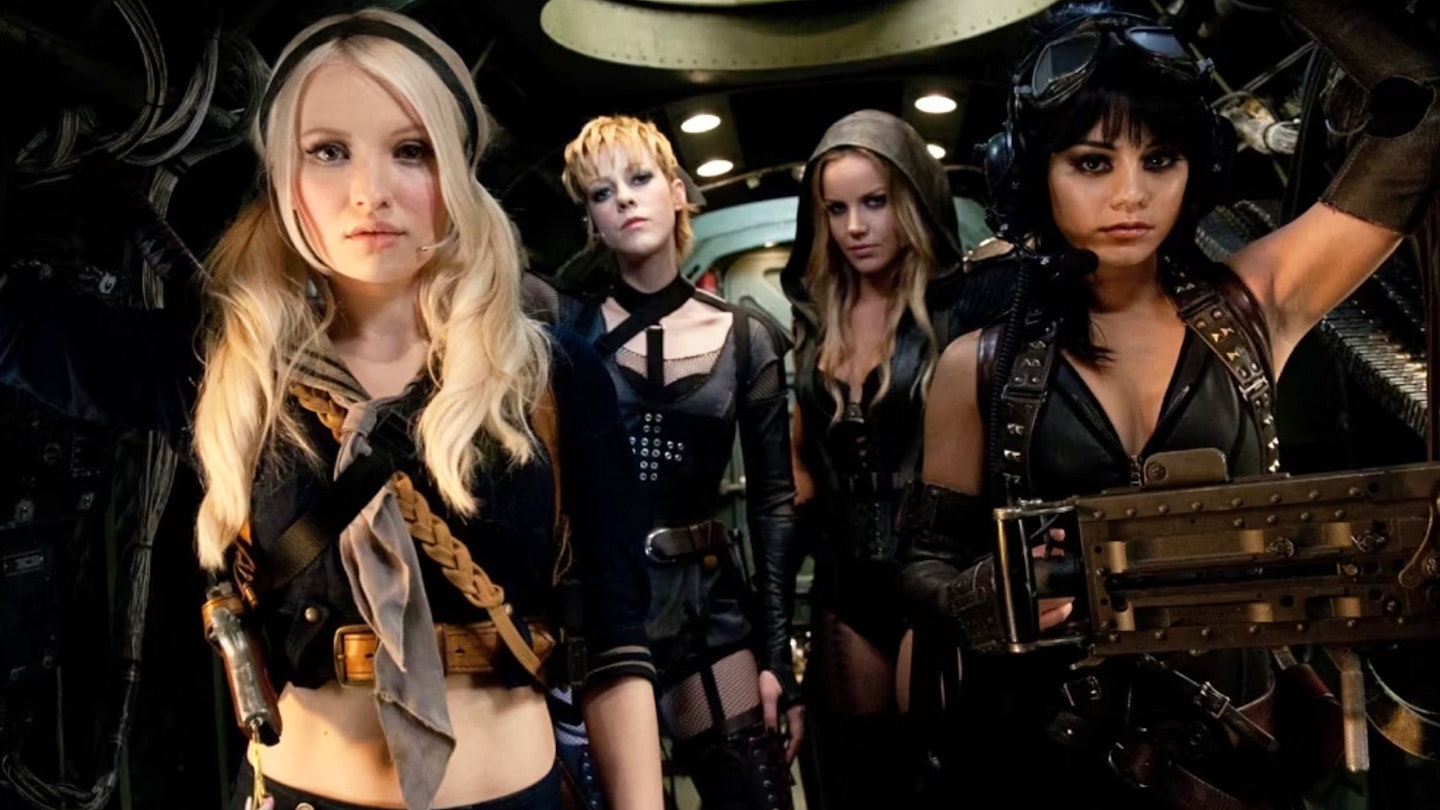From debut Dawn Of The Dead to last year’s Legend Of The Guardians, working exclusively in adaptation has played to director Zack Snyder’s greatest strength: fashioning impressive and distinctive visual constructs from rich source materials. With Sucker Punch, though, we finally get to see what Snyder can make with self-mined ore. In some ways, this is his own Inception (although Christopher Nolan, of course, had also self-penned his debut, Following). And the results are… Well…
A charitable view is that Sucker Punch is Moulin Rouge refried as an action movie. It even opens with a red curtain — suggesting that the opening ‘reality’ scenes, which play out a melodramatic montage in silent semi-slo-mo, are themselves little more than a performance. Then, once Babydoll’s (Emily Browning) perception has mentally tweaked her grim surroundings from asylum to bordelo, we have a faintly titillating milieu of mascara and fishnets giving way not to inventive song-and-dance numbers, but to furious action sequences which throw just about every fantasy/sci-fi/war cliché at the screen. This happens almost literally: each set-piece (there are four) is framed within a dance, which begins with Emily Browning’s Babydoll stiffly swaying her hips as we dive into her eyeball and the action, then pulls out again to find her sweaty and exhilarated while her astonished male audience pant almost post-coitally. (We mean her male audience within the film, although after each of Snyder’s dervish whirls, you wonder if he’s hoping the the same will be true of the kids in the multiplex.) As in Moulin Rouge, anachronistic cover versions — selected for the signpost-value of their lyrics — dominate, and some of these are even (as in Moulin Rouge) sung by a cast member, albeit only on the soundtrack: Browning trills The Eurythmics’ Sweet Dreams (Are Made Of This), The Pixies’ Where Is My Mind and The Smiths’ Asleep.
One could alternatively describe Sucker Punch as Brazil for teenage videogamers. Similar to Terry Gilliam’s dark, fantasy satire, a significant segment of the film plays out in a character’s mind during its traumatic dissolution, fragments of memory and conscious impression melting like snowflakes (a favourite image of Snyder’s) in the blast of a broiling, vivid subconscious. Snyder even brazenly echoes one of Sam Lowry’s demons in Brazil, here triplicating that movie’s giant samurai and having it bleed light rather than fire. But while, for his own dream sequences, Gilliam drew on the kind of broad mythic imagery with which you’d have expected this main character to be familiar, Snyder indulges his love of Heavy Metal magazine, also drawing from manga (Browning fights in a pleated skirt so short it barely covers her butt-cheeks), Tolkien (orcs and dragons feature), steampunk (clockwork steam-powered World War I German zombie-cyborgs!) and high sci-fi (gleaming killer robots on speeding bullet trains). None of which particularly feels like the sort of thing you’d expect to find whizzing round the head of a young woman in the ’60s, but hey, you never know.
The result, as encouraged by the (double) framing device, the soundtrack and Snyder’s own journeyman years in promo-making, feels less like a stream of dream sequences and more like a series of preposterously overblown music videos, thick with the heavy desaturation and pitch-bend slo-mo that dominates all Snyder’s other pictures. Which is fine, but to truly blow us away, all this sense-assaulting pizzazz requires both strong connective tissue and an emotional anchor.
Which, sadly, it lacks. The story, it turns out, is so dizzied by the artifice of its construction (be that Snyder’s film-making technique or Babydoll’s fevered Rabbit Hole-digging) that we’re encouraged to treat nothing as real, and thus feel no sense of jeopardy — only urgency. Unlike, say, The Matrix (you die in The Matrix, you die in The Real) or Inception (you get killed, you get trapped in Limbo), there’s no reason to fear death in Babydoll’s battlegrounds.
And it doesn’t help that each of the characters is only a sketch, both in terms of writing and performance. Abbie Cornish’s Sweet Pea is The Reluctant Cynical One. Jamie Chung’s Amber is the Dim Sweet One. Jena Malone’s Rocket is The Young Enthusiastic One. Vanessa Hudgens’ Blondie is The Other One. And Babydoll is, as the name suggests, little more than a petite mannequin, a mere plot facilitator who even has to delegate the exposition, such as it is, to an avatar (Scott Glenn’s grizzled Wise Man). If only as much attention had been lavished on the characters themselves as on their combat training and costume design.








